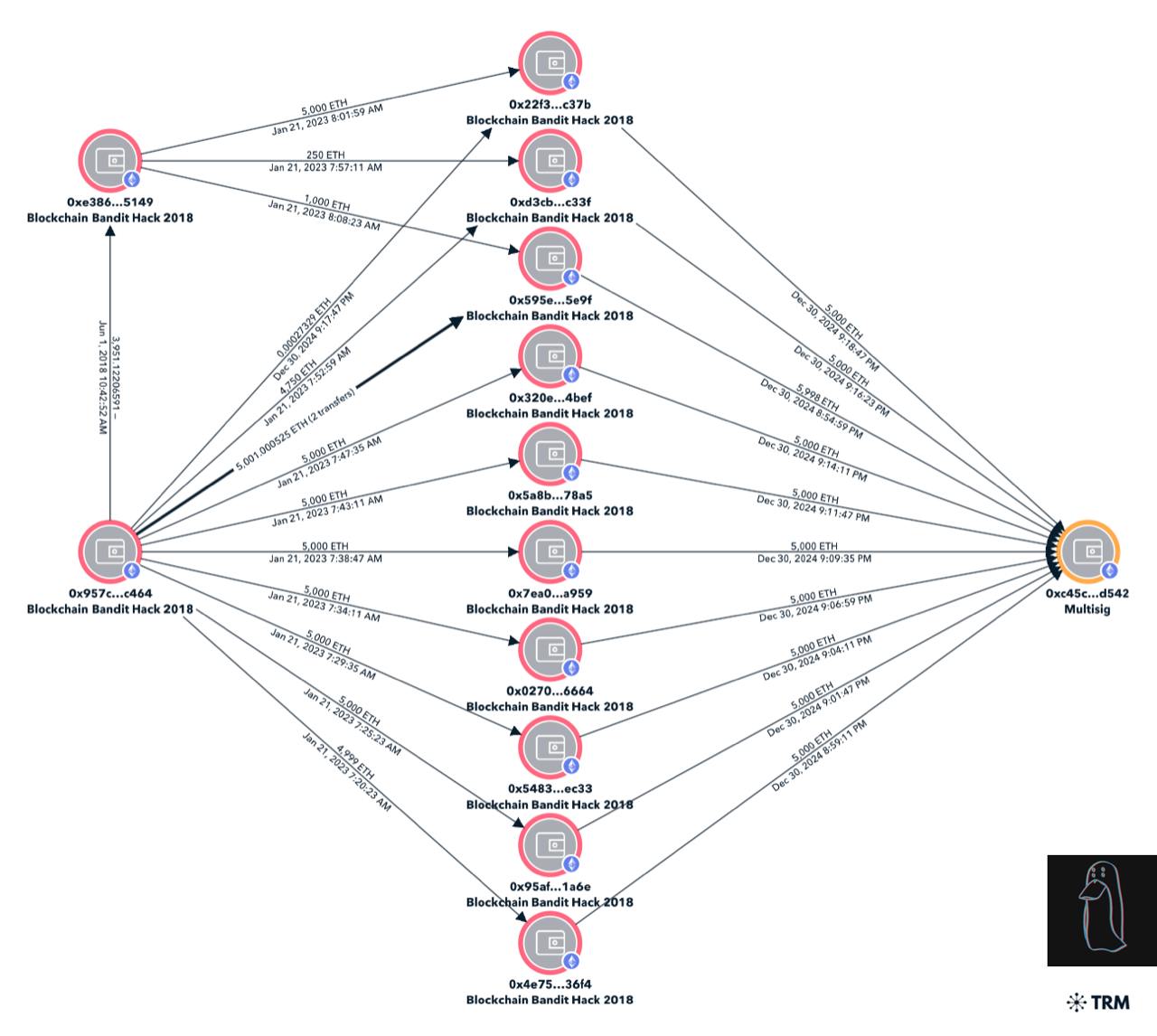The infamous hacker group, under the guise of “Blockchain Bandit”, made a big comeback with the sensation of merging 51,000 Ether into a single wallet, for a total of $172.2 million, almost two years later have been inactive.
The transfer of funds took place between 8:54 p.m. and 9:18 p.m. UTC on December 30 from 10 inactive wallet addresses to a multi-signature wallet labeled “0xC45…1D542.” Each transaction represented 5,000 ETH. Among them, those of January 21, 2023, all were those for which the blockchain bandit transferred 470 Bitcoins (BTC) with Ethereum (ETH).

The “Blockchain Bandit” is the one who implemented one of the new forms of cybercrime using the method of weak private keys, known as “Ethercombing”, which relies on the brute force approach to find problems in poorly written and random code. As for crypto-security expert Adrian Bednarek, the hacker managed to break 732 private keys, corresponding to 49,060 transactions.
The bandit started in 2016, but most of the theft cases took place in 2018. After eight months, he had already generated 45,000 ETH through programmatic theft; this activity has made him the biggest threat in the crypto world. This incident has become a real thorn in the side of the increase in the number of cryptocurrency thefts in recent years.
The return of the Blockchain Bandit highlights, at the same time, the cryptographic vulnerabilities that are inevitably part of the blockchain ecosystem. In a report from onchain security company Cyvers, the total amount of money stolen in 165 security incidents in 2024 was approximately $2.3 billion, a 40% increase from the year previous. 81% of the total money lost, or $1.9 billion, was the result of access control violations on centralized exchanges and custodial platforms, with a particular focus on pig butchery scams .

